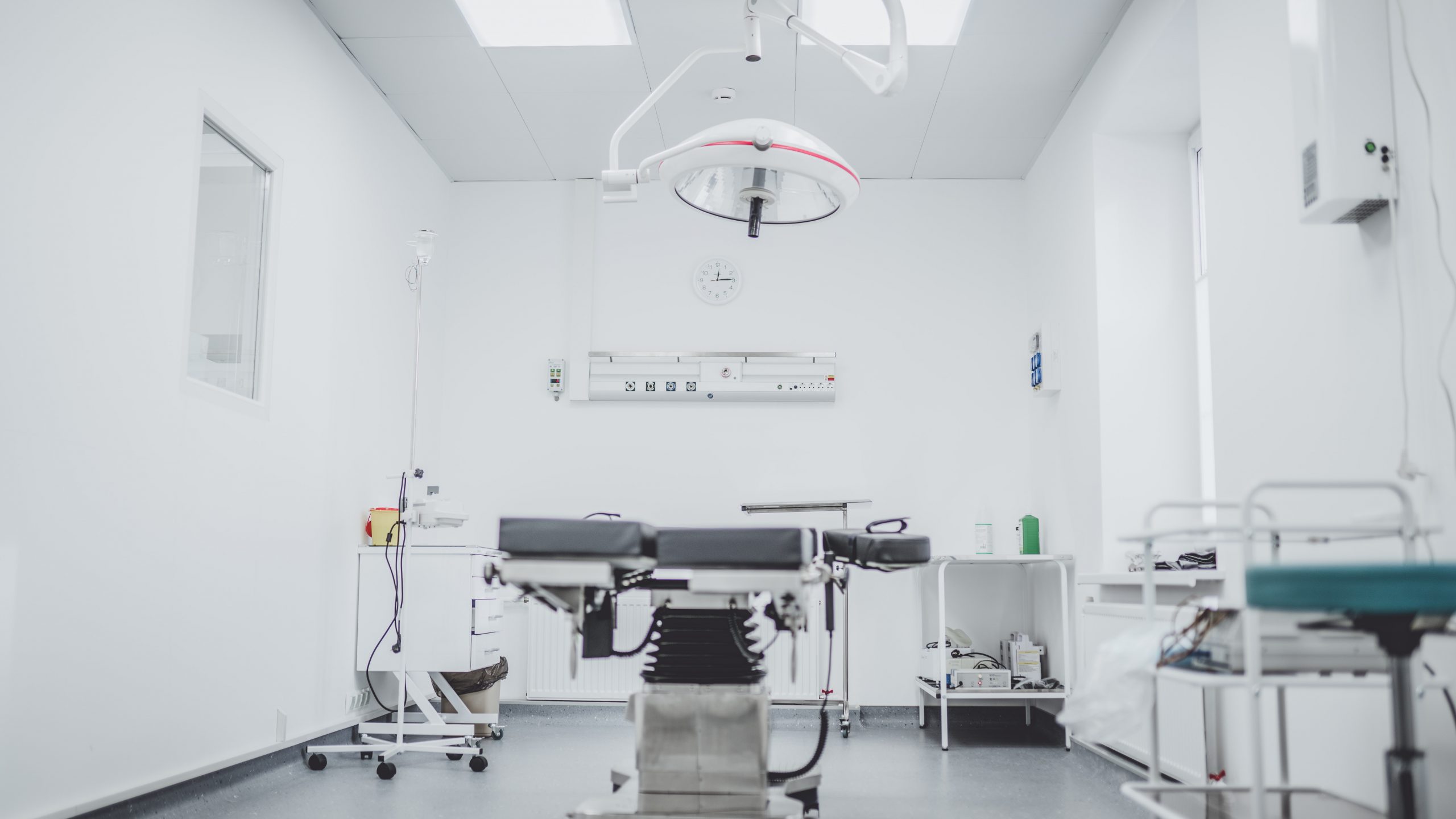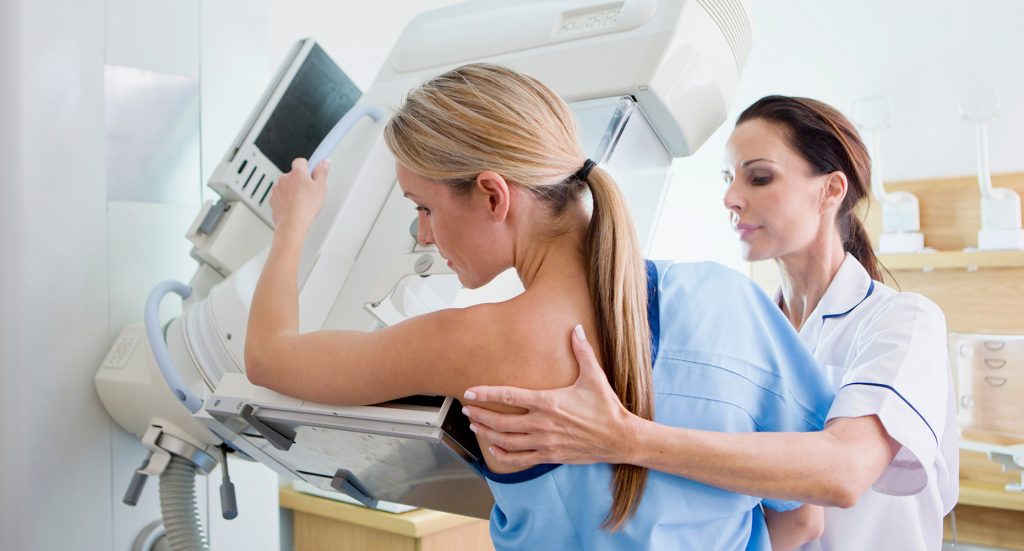Top Concerns in Women’s Health – Part 1
It almost goes without saying, but your female patients are unique from men in so many ways, and not just in their reproductive systems. Not only do their psychology and life experiences tend to differ, but according to Sarah L. Berga, M.D., professor and chair of the Department of Obstetrics and Gynecology and vice president for Women’s Health Services at Wake Forest Baptist Medical Center, it’s their very cellular biology that sets them apart.


Top Concerns in Women’s Health
Part 1 of a 2-part series
March 24, 2021
.
It almost goes without saying, but your female patients are unique from men in so many ways, and not just in their reproductive systems. Not only do their psychology and life experiences tend to differ, but according to Sarah L. Berga, M.D., professor and chair of the Department of Obstetrics and Gynecology and vice president for Women’s Health Services at Wake Forest Baptist Medical Center, it’s their very cellular biology that sets them apart. “Every single cell has a chromosomal sex, and the ‘cellular machinery’ is independent of hormones," she has written. “… most sex differences are the result of the interaction between this chromosomal distinction and hormones.”
It is this very distinction that causes women not only to experience higher rates of certain health conditions than men, Berga says, but to experience biologically different conditions.1
The question is, are you and your staff aware of the unique needs of your female patients? And how attuned are you to the conditions that may be of most concern to them? Not to worry if a brush-up is in order: In this two-part series, we’ll explore five common health concerns of women, along with information you can use to help ease their minds. Here we look at breast cancer and ovarian cancer.
Breast Cancer
Thanks to the good work of Susan G. Komen and other organizations dedicated to breast cancer research and advocacy, women are becoming increasingly knowledgeable about the disease, which is great news. Still, despite the advances that have been made in detection and treatment, breast cancer remains one of the most common cancers among American women. According to the American Cancer Society, the average woman has a 1 in 8 chance that she will develop the disease at some point in her life.2

What You Can Do for Your Patients
While the statistics can be frightening, it is helpful to remind your patients that for most women, there is a 7 in 8 chance that they won’t develop breast cancer.2 Also, screening is widely available and very effective at detection, which allows for earlier treatment.
When you talk about screening, reiterate guidelines from the American Cancer Society. For women at average risk, this means:3
• If they’re between the age of 40 and 44: They should have the choice to have yearly mammograms.
• Between 45 and 54: They should have a mammogram every year.
• 55 or older: They should have a mammogram every two years — or yearly, if they prefer.
Women at high risk, including those who have a strong family history of breast cancer or who have the BRCA1 or BRCA2 gene mutation, should have a mammogram and an MRI of the breast every year beginning at age 30, the American Cancer Society recommends.3 (The COVID pandemic may affect the availability of screening and other procedures, so it might be a good idea to discuss this possibility with your patients; it also may be helpful to remind them of the signs and symptoms of breast cancer, below.)
Since research has shown no clear benefit to breast self-exams, they are no longer recommended. However, the American Cancer Society advises that all women, regardless of age, should become familiar with how their breasts look and feel. This way, if any changes do occur, they can act quickly.3
Signs and Symptoms of Breast Cancer
Educate your patients on the importance of being seen right away if they detect any of the following changes in their breasts.4
• Changes to the nipples, such as if they turn inward or retract, or if the skin gets red or scaly
• Discharge from the nipples
• Lumps in the breasts
• Pain anywhere in the breasts
• Swelling in or around the breasts, armpits or collarbones
• Thickening or redness of the skin on the breasts
• Warmth or itching of the breasts
How Women Can Help Reduce the Risk of Breast Cancer
There’s no proven way to prevent breast cancer, but women can reduce their risk several ways:
- Limit alcohol. According to breastcancer.org, women who consume three alcoholic drinks per week have a 15 percent higher risk of developing breast cancer compared with women who don't drink at all.5 Since even small amounts of alcohol can increase the risk, the American Cancer Society recommends limiting alcohol to one drink per day, if any.6
- Maintain a healthy weight. Being overweight or obese increases your risk after menopause.6
- Eat healthfully. According to breastcancer.org, researchers are examining potential links between breast cancer and diet, with some studies suggesting that very low-fat diets may reduce the risk. In the meantime, they recommend that women:7
• Eat at least five cups of fruits and vegetables a day
• Eat foods that are high in omega-3 fatty acids, such as seafood, nuts and seeds, and plant oils
• Limit saturated fat to less than 10 percent of total daily calories
• Limit total fat intake to approximately 30 grams per day
• Avoid processed meats, trans fats, and charred or smoked foods
- Stay active. The American Cancer Society recommends a minimum of 150 to 300 minutes of moderate-intensity exercise, or 75 to 150 minutes of vigorous-intensity exercise, every week (or a combination of both). A total of 300 minutes or more is ideal.6
- Carefully consider the use of postmenopausal hormone therapy. According to the American Cancer Society, EPT (estrogen-progestin therapy) increases the risk of breast cancer. It also increases the risk that cancer will be found at a more advanced stage.8

Ovarian Cancer
While ovarian cancer isn’t the most common form of gynecologic cancer — endometrial cancer is — it ranks among many women’s top health concerns.9 There is no reliable way to screen women who don’t have signs and symptoms, the Centers for Disease Control and Prevention reports.10 Also, ovarian cancer is more lethal than any other type of gynecologic cancer and often isn’t diagnosed until it’s metastasized, says the University of Michigan Comprehensive Cancer Center.9
What You Can Do for Your Patients
Education can go a long way in helping to ease patients’ concerns. This includes educating them about the signs and symptoms of ovarian cancer and what they should do if they notice anything suspicious. It also may help to inform them that the disease is rare among women who are 40 or younger (though the risk does increase after menopause, with about one-half of all cases occurring in women aged 63 or older).11
https://www.cancer.org/cancer/ovarian-cancer/causes-risks-prevention/risk-factors.html
Signs and Symptoms of Ovarian Cancer
Unfortunately, ovarian cancer typically doesn’t present with signs or symptoms in its early stages, which is why it’s often referred to as a silent disease.9 However, when symptoms are present, they may include the following:12
.
• Abdominal pain
• Back pain
• Bloating
• Constipation
• Difficulty eating
.
• Feeling full too quickly
• Increased urination
• Pelvic pain or pressure
• Unusual vaginal discharge
• Vaginal bleeding, especially if postmenopausal
.
Remind your patients to remain aware of what’s normal for their own body and to schedule an appointment if something seems amiss. The CDC recommends that a woman see her doctor right away if she has any unusual bleeding (or any vaginal bleeding at all in postmenopausal women). Any other symptoms that are unusual for a woman, and that persist for two weeks or more, warrants a medical visit.12 And, of course, if a woman is at higher risk of ovarian cancer due to a family history of the disease, a BRCA-1 or BRCA-2 mutation or other factors, that will require a detailed discussion with you or perhaps genetic counseling.13,14
Factors That May Help Reduce the Risk of Ovarian Cancer
Informing your patients of factors that may reduce the risk of ovarian cancer can help allay their fears. These include:
- Having had children, or having used birth control:
According to the University of Michigan, most ovarian cancers occur in women who have had many ovulations throughout their lives. Reducing the number of ovulations, either through pregnancies or through the use of oral contraceptives, therefore reduces the risk.9 - Reducing ovulations by other means:
For the same reason, having had an oophorectomy of both ovaries may reduce the risk of ovarian cancer; so may a hysterectomy or a tubal ligation, the CDC reports.15 - Extended breastfeeding:
This, too, may confer benefits by delaying ovulation, according to the Ovarian Cancer Research Alliance.16 - Maintaining a healthy weight:
Keeping body weight at a healthy level, or losing weight if overweight, can reduce the risk, World Cancer Research Fund International reports.17
.
Continue reading part two of this series, where we examine three additional health concerns common among women: reproductive health, diabetes and mental health.
Footnotes:
1 “Medicine Looking Into Vital Differences Between Women and Men.” Wake Forest Baptist Health, https://www.wakehealth.edu/Stories/Differences-Between-Men-and-Women. Accessed Feb. 2021
2 How Common Is Breast Cancer? Breast Cancer Statistics. https://www.cancer.org/cancer/breast-cancer/about/how-common-is-breast-cancer.html. Accessed Feb. 2021.
3 ACS Breast Cancer Early Detection Recommendations. https://www.cancer.org/cancer/breast-cancer/screening-tests-and-early-detection/american-cancer-society-recommendations-for-the-early-detection-of-breast-cancer.html. Accessed Feb. 2021
4 Breast Cancer Symptoms: What You Need to Know. https://www.cancer.org/latest-news/breast-cancer-symptoms-what-you-need-to-know.html. Accessed Feb. 2021.
5 “Drinking Alcohol.” Breastcancer.Org, 11 Sept. 2020, https://www.breastcancer.org/risk/factors/alcohol.
6 Can I Lower My Risk of Breast Cancer? https://www.cancer.org/cancer/breast-cancer/risk-and-prevention/can-i-lower-my-risk.html. Accessed Feb. 2021.
7 “Can Food Reduce Your Risk of Breast Cancer?” Breastcancer.Org, 18 Nov. 2020, https://www.breastcancer.org/tips/nutrition/reduce_risk/reduce_risk.
8 Menopausal Hormone Therapy and Cancer Risk. https://www.cancer.org/cancer/cancer-causes/medical-treatments/menopausal-hormone-replacement-therapy-and-cancer-risk.html. Accessed Feb. 2021.
9 “What Every Woman Should Know About Gynecologic Cancer.” University of Michigan Comprehensive Cancer Center, https://www.med.umich.edu/cancer/files/what-every-woman-should-know.pdf. Accessed Feb. 2021.
10 What Should I Know About Ovarian Cancer Screening? CDC. 7 July 2020, https://www.cdc.gov/cancer/ovarian/basic_info/screening.htm.
11 Ovarian Cancer Risk Factors. https://www.cancer.org/cancer/ovarian-cancer/causes-risks-prevention/risk-factors.html. Accessed Feb. 2021.
12 What Are the Symptoms of Ovarian Cancer? CDC. 31 Dec. 2020. https://www.cdc.gov/cancer/ovarian/basic_info/symptoms.htm.
13 BRCA1 & BRCA2 Genes: Risk for Breast & Ovarian Cancer. Memorial Sloan Kettering Cancer Center. https://www.mskcc.org/cancer-care/risk-assessment-screening/hereditary-genetics/genetic-counseling/brca1-brca2-genes-risk-breast-ovarian. Accessed Feb. 2021.
14 Talk with a Doctor If Breast or Ovarian Cancer Runs in Your Family. MyHealthfinder, Health.Gov. https://health.gov/myhealthfinder/topics/health-conditions/cancer/talk-doctor-if-breast-or-ovarian-cancer-runs-your-family. Accessed Feb. 2021.
15 What Can I Do to Reduce My Risk of Ovarian Cancer? CDC. 7 July 2020, https://www.cdc.gov/cancer/ovarian/basic_info/prevention.htm.
16 “Extended Breastfeeding Reduces the Risk of Ovarian Cancer.” OCRA. https://ocrahope.org/2013/01/extended-breastfeeding-reduces-the-risk-of-ovarian-cancer/. Accessed Feb. 2021.
17 “A Scientific Breakthrough: Maintaining a Healthy Weight Reduces Your Risk of Ovarian Cancer.” World Cancer Research Fund, 11 Mar. 2014, https://www.wcrf.org/int/blog/articles/2014/03/scientific-breakthrough-maintaining-healthy-weight-reduces-your-risk.
Related Articles
Introducing the HemoCue Customer Portal